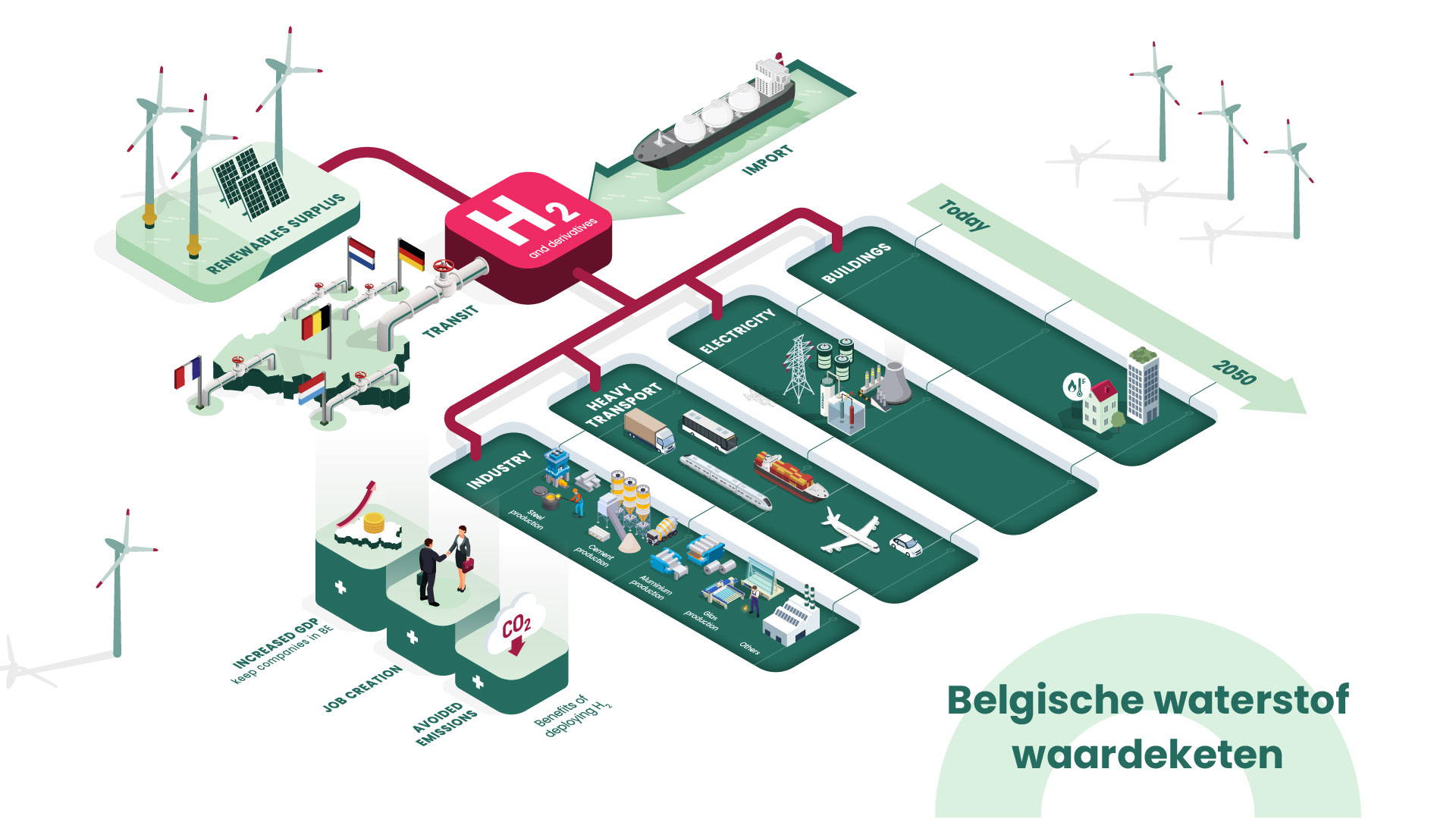North Sea Port, Port of Antwerp-Bruges and Port of Oostende have been recognised as a ‘Hydrogen Valley’ at European level. This status is granted to a geographical area with a complete hydrogen value chain from production to distribution, storage and local end-use in various sectors.
The three ports are complementary in their activities and therefore have a unique starting position for the development of the hydrogen economy. For example, they combine steel and chemical industry clusters with energy hub functions and offshore renewable energy production. Due to their geographical location, they act as a gateway to a European network of inland waterways, railways, pipelines and road connections. The Flemish Hydrogen Ports Valley therefore has all the assets to play a crucial role in the European hydrogen economy.
Green and low-carbon hydrogen
Several projects for the production of green and low-carbon hydrogen and derived molecules are already being developed and implemented in the area. In addition to decarbonising the existing needs of the local chemical industry, this hydrogen will also be used in steel production, shipping and road transport, among others. The first demonstrations of these new applications have already been realised.
In the near future, local production will be combined with large-scale international import and transit of low-carbon molecules to deliver clean hydrogen to local and hinterland customers via the open-access European Hydrogen Backbone.
Local and continental network
The European Union sees Hydrogen Valleys as a powerful tool to demonstrate how the hydrogen economy works at the local level. These local hydrogen economies can then be connected to form a continental network in the future. Ports have a unique potential in this respect: up to 42% (22 Mt or 730 TWh) of the total EU hydrogen demand in 2050 could be located in port areas.
The ‘Hydrogen Valley’ certificate was issued by the Clean Hydrogen Partnership and Mission Innovation, who maintain an online map with the main characteristics of hydrogen valleys in Europe and the world – the Hydrogen Valley Platform.
The Flemish Hydrogen Ports Valley is coordinated by the knowledge and collaboration platform WaterstofNet, as coordinator of the Hydrogen Industry Cluster, of which all participating ports are members.
This post Europese Hydrogen Valley status voor Vlaamse havens (waterstofnet.eu) first appeared on WaterstofNet News, July 12, 2023.
Image credit: FOD Economie
REpowering the EU with Hydrogen Valleys
Hydrogen Valleys are in the center of the European discussions on REpowerEU. Launched in May 2022, REPowerEU is helping the EU to save energy, produce clean energy and diversify its energy supplies. Hydrogen Valleys contribute to these objectives by scaling up green hydrogen production, supply and consequently to meet the growing demand from industry, transport and other sectors. They contribute to EU energy independence while accelerating the clean energy transition and pursuing the decarbonisation objectives under European Green Deal.
The website https://www.h2v.eu/, made by the FCH-JU (Fuel Cells and Hydrogen Joint Undertaking), the largest European public-private partnership that has supported and funded a significant part of the European hydrogen activities for more than a decade, has tracked all of the cluster projects that fulfill the criteria to be named hydrogen valley and compiled them in a handy map.





